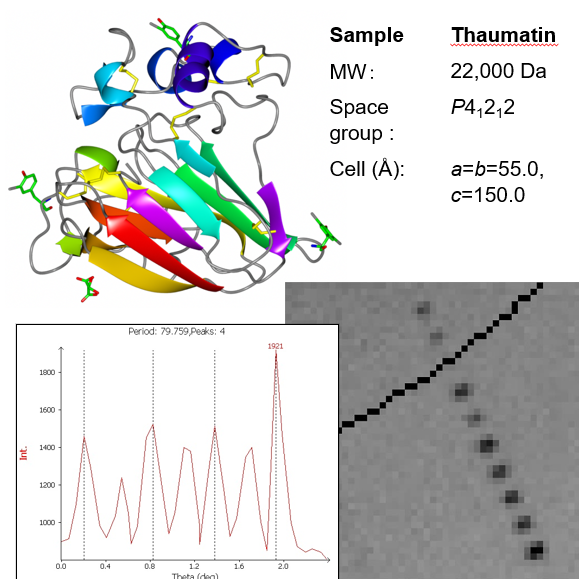Large Unit Cells
Crystals of biomacromolecules, such as proteins, typically have large unit cells compared to low-molecular-weight crystals. In recent years, there has been increasing research into low-molecular-weight crystals with large unit cells consisting of cyclic compounds or spherical molecules.
As the unit cell size increases, diffraction spots become so close on the detector that they sometimes overlap. To separate these overlapping spots, one approach in the past has been to increase the distance between the crystal and the detector. However, this method reduces both the intensity of the diffraction peaks and the angular range covered in each measurement image, resulting in longer measurement times compared to standard methods. For these reasons, crystals with large unit cells have typically been analyzed at synchrotron radiation facilities, where high-intensity, highly parallel incident X-rays are available.
However, in more recent single crystal X-ray diffraction instruments, mechanisms have been developed to reduce the beam divergence angle of the incident X-rays, and state-of-the-art detectors with adequate resolution have been incorporated. By taking into account not only the distance but also other factors in the measurement conditions, it has become possible to measure large unit cell crystals on laboratory equipment.

Rigaku recommends the following products

Contact Us
Whether you're interested in getting a quote, want a demo, need technical support, or simply have a question, we're here to help.
